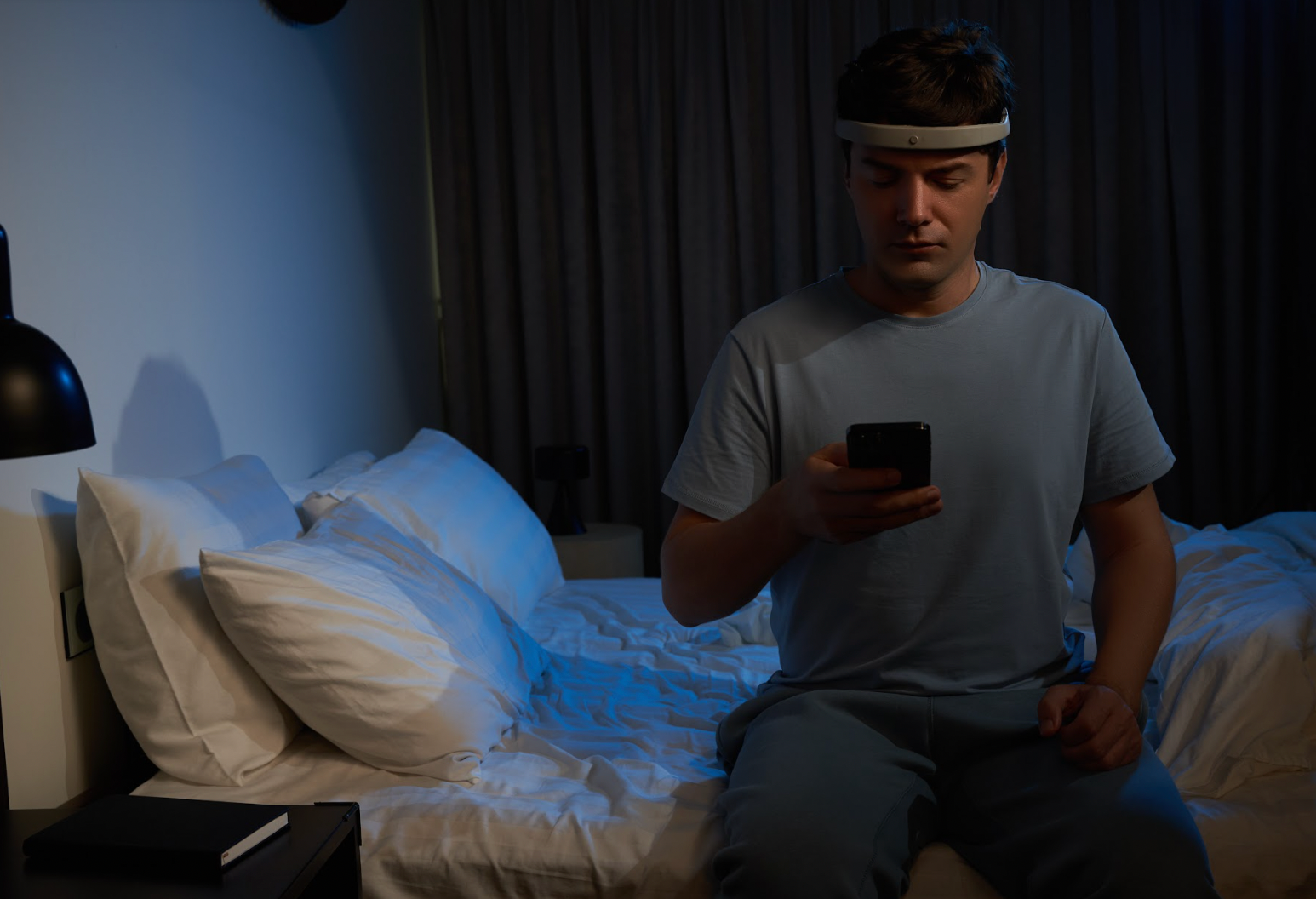Why are polysomnography tests traditionally performed in labs?
In-lab clinical testing has traditionally been able to provide the precision and accuracy that take-home tests and tracking wearables cannot. This is primarily due to artifacts, or intrusive signals like sounds or movements in a recording channel that obscure or provide false data.
The best signal recordings are artifact-free, but achieving this generally requires a technician to provide careful electrode placement and connection. Technicians are also extremely careful about receiving the lowest impedance possible. Subtle brain variations in electrical currents are impacted by impedance, any obstruction, or the measure of the opposition of an electric current to the energy flow when voltage is applied. Only by preventing signal artifacts and current impedance, polysomnography can provide accurate and precise data.
These problems are the main reasons that the accuracy and precision of polysomnography tests have only been achieved in clinical lab settings.
Precision and accuracy in the lab setting
With traditional sleep clinic polysomnography readings, uncomfortable wires and pastes are required to achieve the utmost precision. In achieving the lowest impedance values, the skin needs to be scraped to remove the outermost layer of the skin to create the best connection for the many rigid electrodes and dangling wires. The guideline is that electrode impedances must match closely matched as possible, as impedance mismatching allows current to pass through to the amplifier and can lead to an artifact.
Two methods are used to secure the disc electrodes while achieving minimum impedance. In one, the electrode disks are filled with electrolyte or electrode paste. Another method uses compressed air to attach collodion saturated gauze squares placed over the electrode disc securely to the electrode site. In both, the patient will have liquid and adhesive substances uncomfortably stuck to them.
Although non-invasive and safe, these methods are uncomfortable and require adhesives that can harden on the skin or stick to the patient’s hair, causing irritation when moving and finding the best sleep positions. This application of electrodes further impedes the patient’s mobility and comfort due to the rigidity of the electrodes themselves, which are inflexible and metallic.
Beyond that, to receive the precision and quality one can only expect from in-lab clinics, other significant drawbacks in receiving a polysomnography include:
- In-lab polysomnography tests can cost upwards of $1,000, and insurance companies are often reluctant to fully cover them, if at all. This fact alone is the primary hindrance causing inaccessibility to polysomnography tests.
- The recording is performed in an unfamiliar or uncomfortable environment. Although the application is non-invasive and the setting is often comfortable, patients report that the procedure is invasive to their privacy, and the unfamiliar setting may inhibit sleep results.
- Scheduling could disrupt or interfere with daily routine and responsibilities. Patients are often required to wait weeks or even months to take in-lab tests, which are fixed to certain schedules that could hinder the results of patients who are accustomed to different sleep schedules.
- Also, In-lab studies require transportation to and from a sleep lab, which could be problematic for some.
These qualities make in-lab polysomnography either inaccessible or impractical for many. In considering these restrictions, people who regularly receive insufficient sleep will undermine the seriousness of sleep problems, resulting in undiagnosed conditions and self-remedies, including dangerous OTC or unprescribed sleep medications. On the other hand, some are intimidated by the appearance of doctor coats and attached neural electrodes, so they assume their sleeping problem is not severe enough to consult an in-lab setting.
FRENZ™ brings polysomnography precision and accuracy home
Without electrode paste and dangling wires, the mechanical engineering team and electrical-circuit experts engineered a proprietary low-noise electrical integrated system that captures signals precisely, eliminating noise caused by the wearer’s movements.
Instead of rigid electrodes and sensors, the FRENZ™ forehead electrode sensors are made from 24K gold plated brass with omnidirectional flexibility and proprietary tri-sensing technology that helps collect and combine different brain signal channels to provide the most accurate and precise reading of brain activities.
In the absence of traditional equipment, FRENZ™ applies patented machine-learning algorithms to signals received by the device’s unique over-ear dry-sensing electrodes to filter, split, and process multiple signal channels to activate appropriate acoustic stimulation at precise moments. This feature allows FRENZ™ to be the only consumer device that captures brain signals (EEG), multiple bio-vitals (EKG, spO2, head motion, breathing rhythm), facial-micromovements (EMG), and eye motions (EOG) in real-time with unrivaled precision.
The following innovations have enabled FRENZ™ to deliver polysomnography directly to consumers:
- Patented FRENZ™Touch: The unique over-ear dry-sensing electrodes are strategically located on the temporomandibular joint to detect critical EEG, EOG, and EMG signals and filter out undesired audio artifacts. FRENZ™Touch are made of a unique mixture of nanomaterials, including carbon nanotubes, silver nanowires and conductive silicon, undergoing a proprietary process of curing.
- Patented IE/IC System: FRENZ™ captures signals precisely amidst background noises and movements thanks to its proprietary low-noise electrical integrated system. To combat with noises from human nonvoluntarily micro and macro motions, FRENZ™ is equipped with proprietary 3CA technology and custom-built active electrodes that eliminate motion artifacts from its root on the analog domain, resulting in high-fidelity signals which is the critical input for any AI system.
- Proprietary Artificial Intelligent algorithms: FRENZ™ employs novel ML algorithms to efficiently analyze high-fidelity signals and extract, filter, split, and process in real-time the vital signals to produce personalized and effective stimulation with minimal energy and data usage.
Eliminating the problem of artifacts and impedance has been the most significant obstacle to bringing clinical precision home to consumers. Achieving this degree of accuracy would require a skilled polysomnography technician to place and secure every electrode.
These innovations are what let the team at Earable make the impossible possible. The FRENZ™ brain band delivers in-lab polysomnography with precision and accuracy.
FRENZ™ – More than just a sleep tracking wearable
One-third of the world population experiences sleep problems. Eight hours of nightly sleep amount to 1/3 of daily life, and those eight hours of sleep directly affect the focus and clarity of your next eight hours at work or school. Using a FRENZ™ will help you improve those 2/3 of your daily life. FRENZ™ has the potential to change the world.
These innovations make FRENZ™ the only consumer capable of delivering clinically proven precision and accuracy to deliver personalized Cognitive Behavioral Therapy (CBT) straight to the user. We eliminate the challenges associated with delivering polysomnography at home, making mental health sleep support accessible to everyone.
With Frenz, we make sleep support a lifestyle choice instead of a necessity. FRENZ™ makes sleep support a routine, not a remedy. FRENZ™ will help you unleash your potential.



